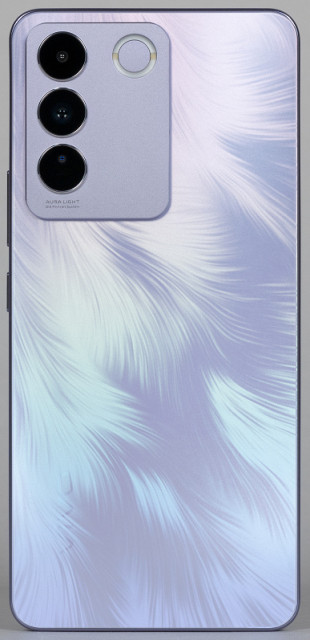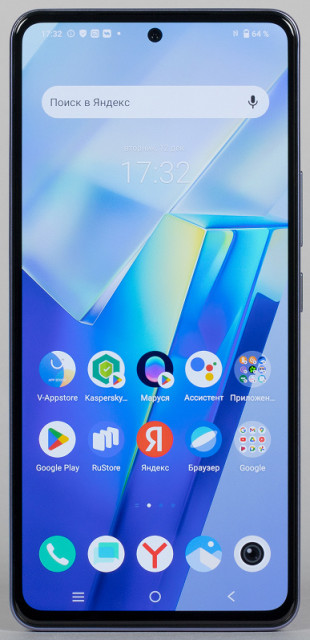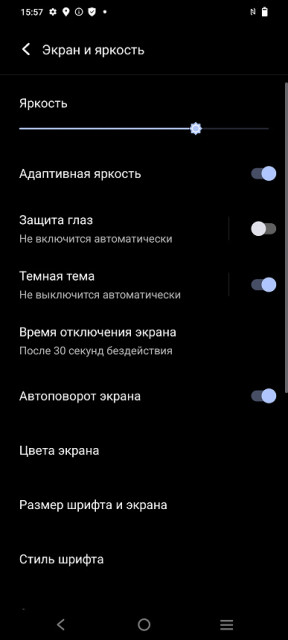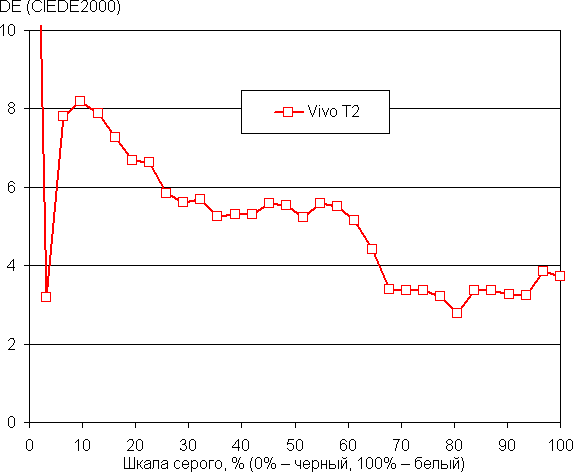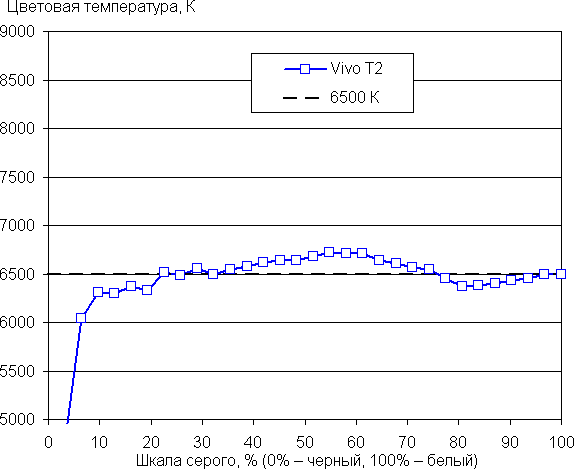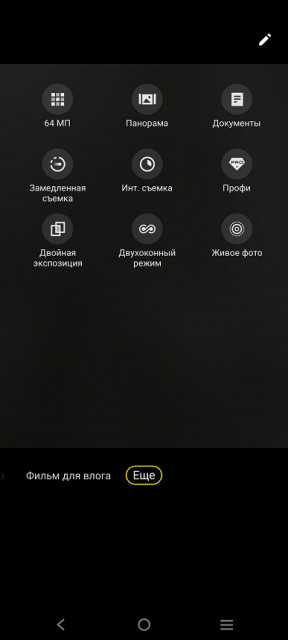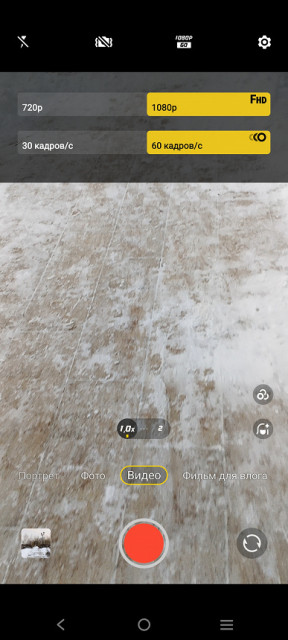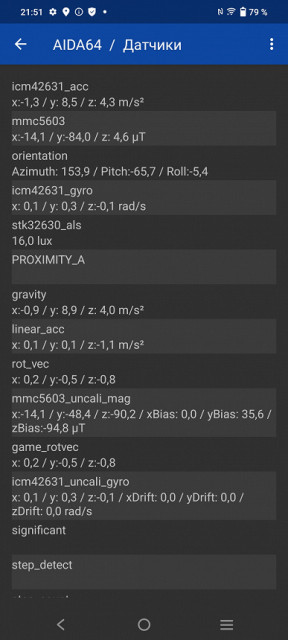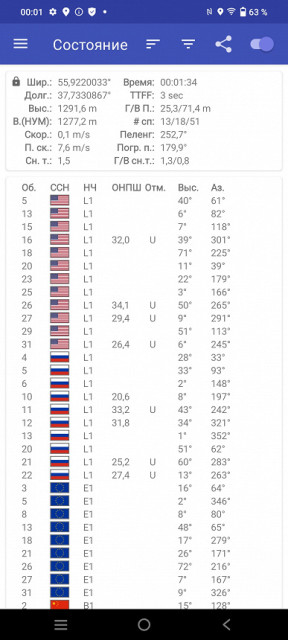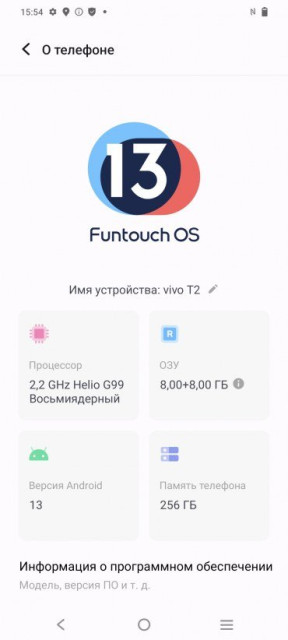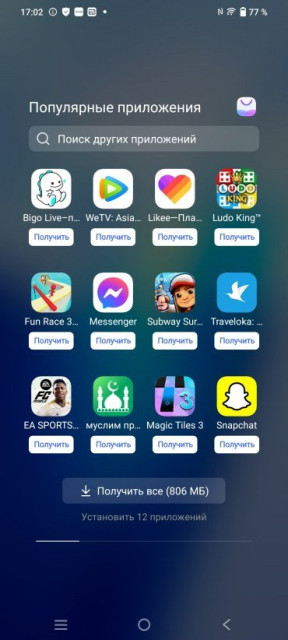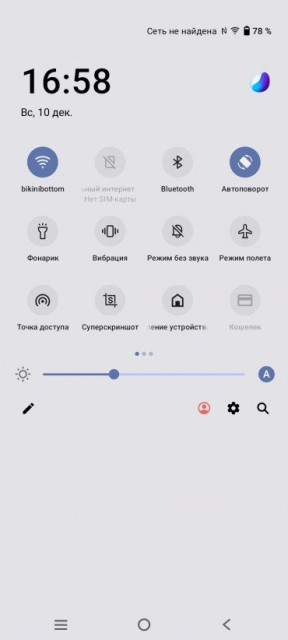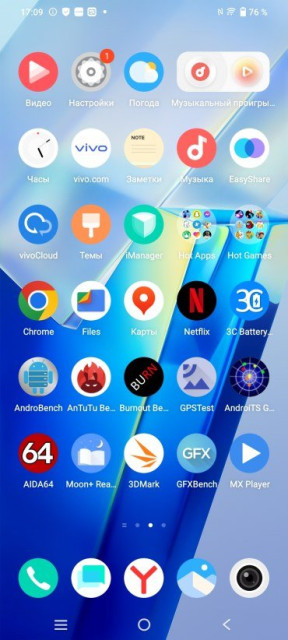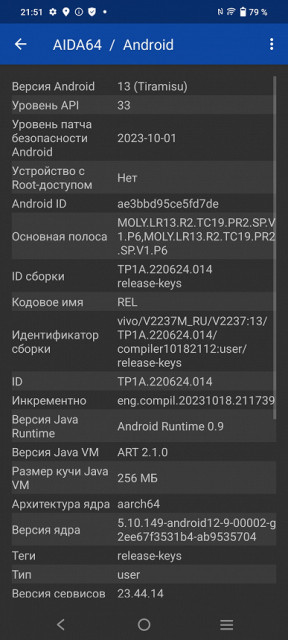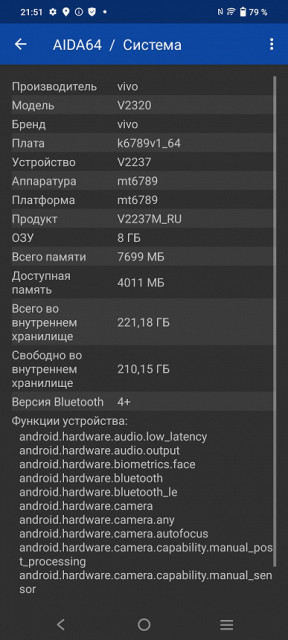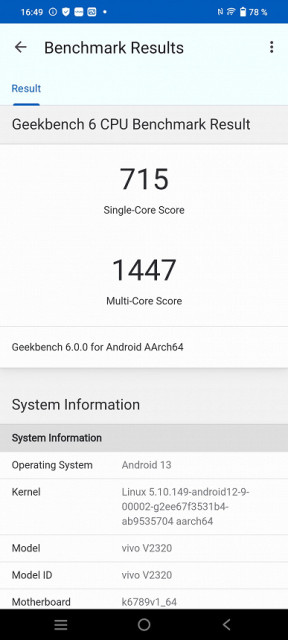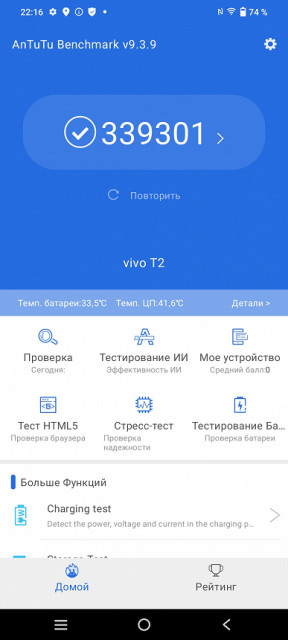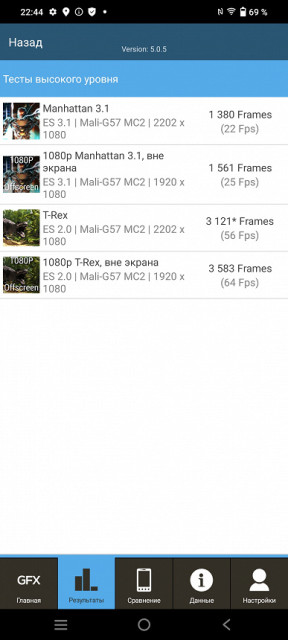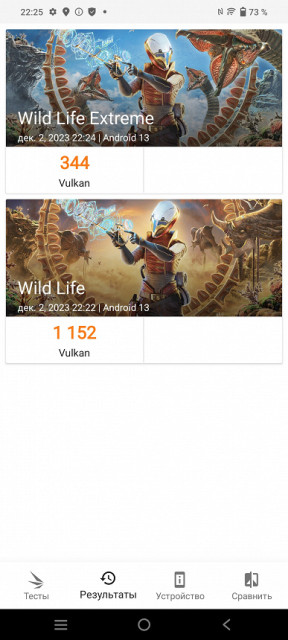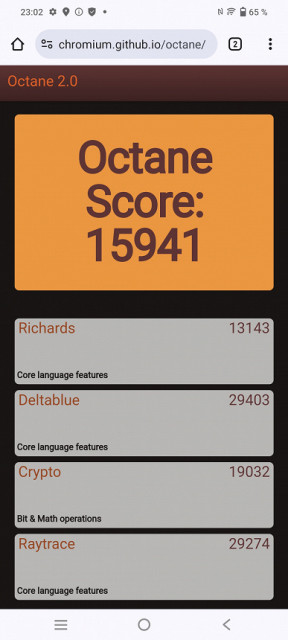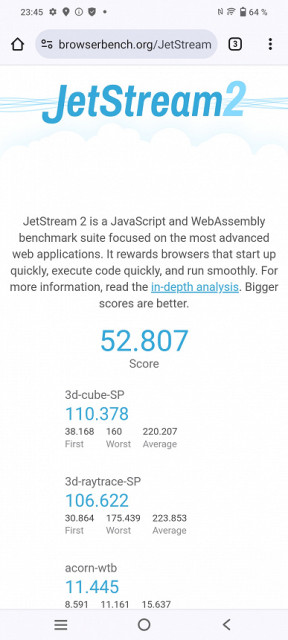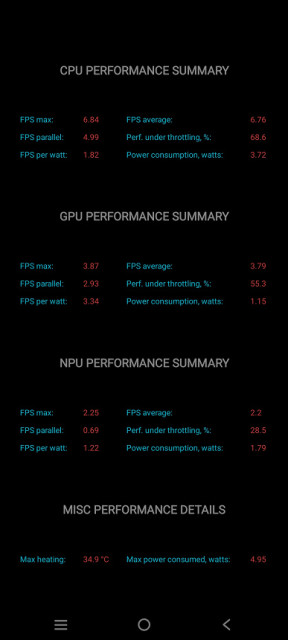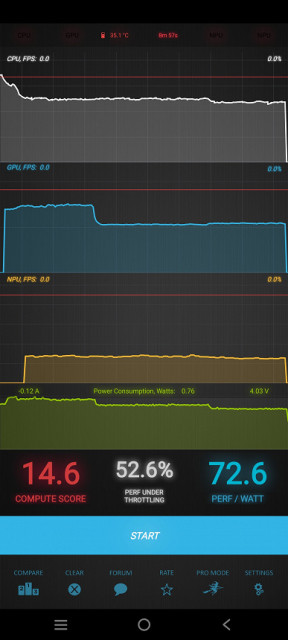Vivo T2 is a new mid-range model from a famous Chinese brand. It stands out for its modern body design, bright ring light for photos, high-quality screen, fairly powerful platform and high-quality capabilities for photo and video shooting.
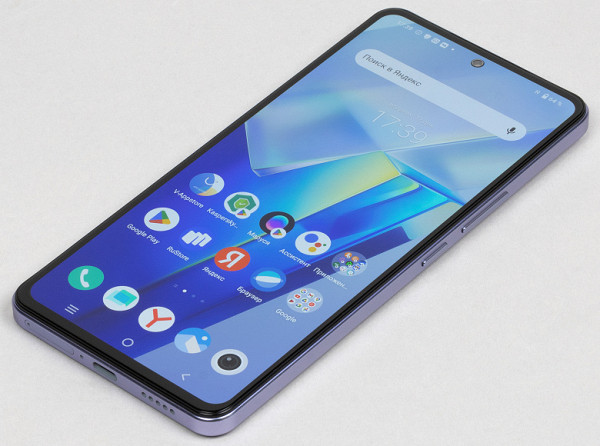
Vivo T2 Key Features
- SoC Mediatek Helio G99, 8 processor cores (2×Cortex-A76 @2.2 GHz + 6×Cortex-A55 @2.0 GHz)
- GPU Mali-G57 MC2
- Operating system Android 13, Funtouch 13
- Touch display AMOLED, 6.62″, 1080×2400, 20:9, 398 ppi, 120 Hz
- RAM 8 GB, internal memory 256 GB
- microSD support (combined slot)
- Nano-SIM support (2 pcs.)
- Сети 2G GSM, 3G WCDMA, 4G, 5G
- GPS, Glonass, BDS, Galileo, QZSS
- Wi-Fi 5 (2.4 and 5 GHz)
- Bluetooth 5.2, A2DP, LE, aptX HD, aptX Adaptive
- NFC
- USB 2.0 Type-C, USB OTG
- There is no 3.5mm audio output for headphones
- Cameras 64 MP + 2 MP + 2 MP, video 1080p@60 fps
- Front camera 32 MP
- Proximity and lighting sensors, magnetic field, accelerometer, gyroscope
- Fingerprint scanner (under the screen)
- Battery 4600 mAh, charging 66 W
- Dimensions 163×76×7.7 mm
- Weight 186 g
Appearance and ease of use
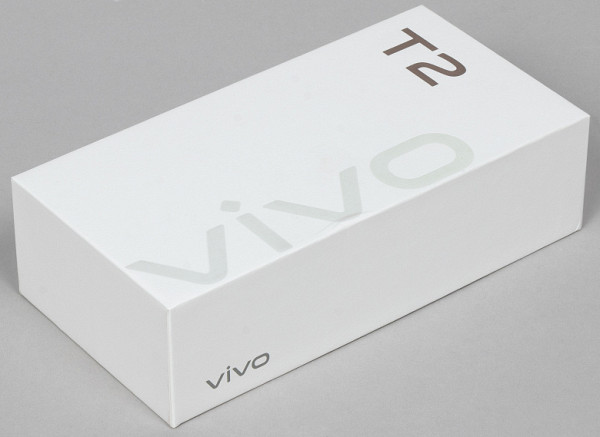
The Vivo T2 smartphone comes in a hard cardboard packaging with a stylish, discreet design.
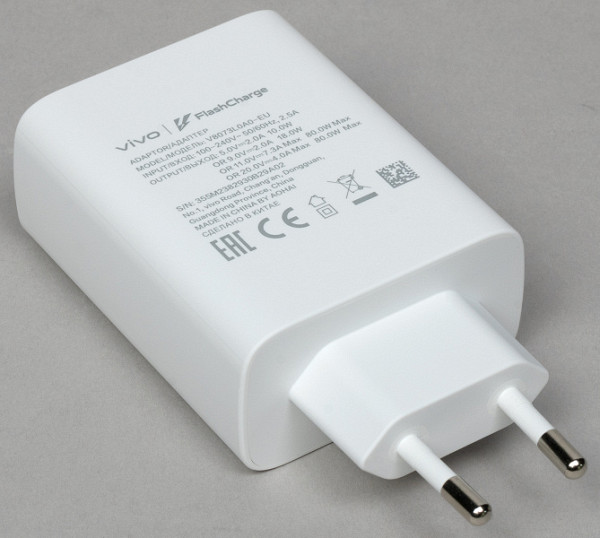
The kit includes a power supply, connecting cable and a transparent flexible case.
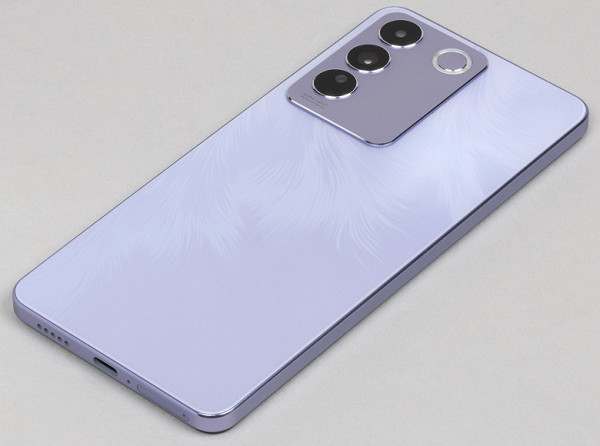
In terms of design, Vivo T2 remains relevant: there are no curved glasses or narrowed sides, only flat surfaces. The appearance is restrained and neat. This smartphone does not have a clearly defined price category, as it fits harmoniously into any environment and suits different clothing styles. Visually it looks even more expensive than it costs.

The back panel and sides of Vivo T2 are made of plastic. The back panel has a matte texture with a shimmering effect (in the case of the lavender shade), while the side frame looks like painted metal with a shiny finish. The transitions between the panel and the sides are smooth and not sharp, which makes the device comfortable for long-term use.
The smartphone is small and compact in size and weight. The screen occupied almost the entire area of the front panel, the frame around the screen is minimal on all sides, even the “chin”.
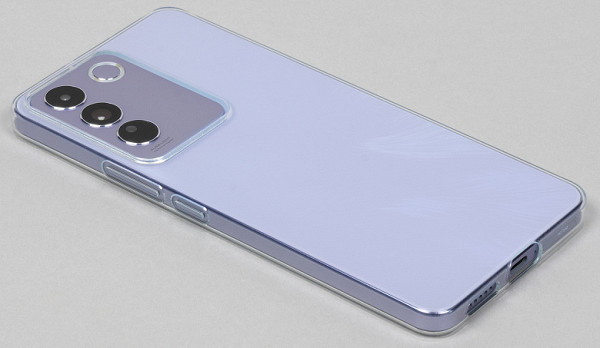
The smartphone is small and compact in size and weight. The screen occupied almost the entire area of the front panel, the frame around the screen is minimal on all sides, even the “chin”.
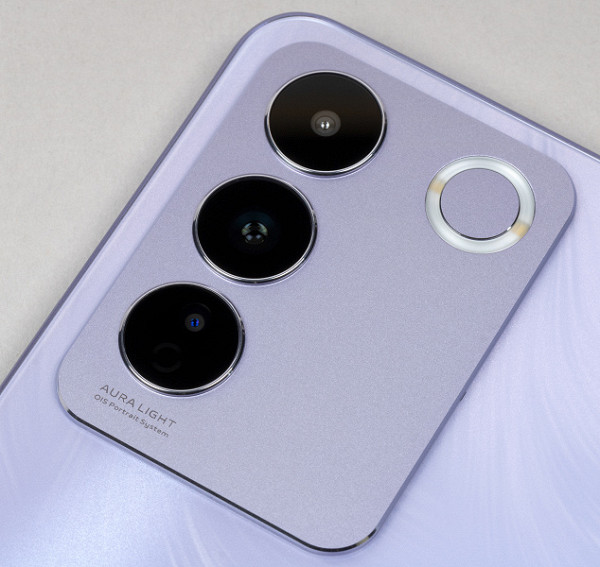
The rear camera block of the Vivo T2 has a unique design: in addition to the usual flash, it is equipped with a ring light, the color of which the user can adjust using a special slider while shooting. This system was called «Aura».

The cameras on the back protrude slightly, so the smartphone lies quite stable on a hard surface.
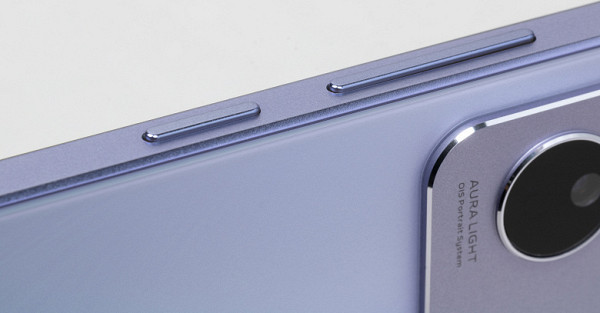
The side keys have an elastic long stroke, protrude to a considerable height, there are no complaints about them.
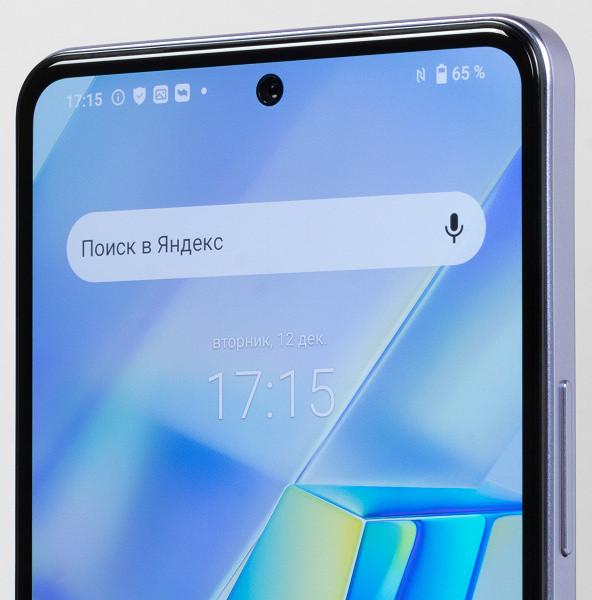
A single front camera eye is installed behind a circular cutout in the screen matrix in the center of the top edge.
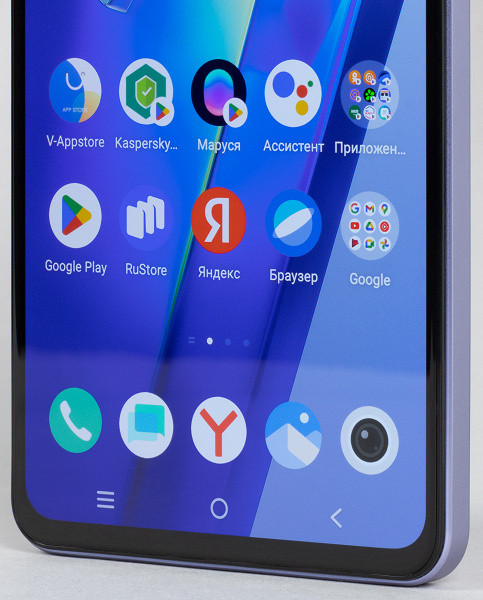
The fingerprint scanner is installed on the front under the glass of the screen. It is optical and operates more or less quickly, but not faster than capacitive.
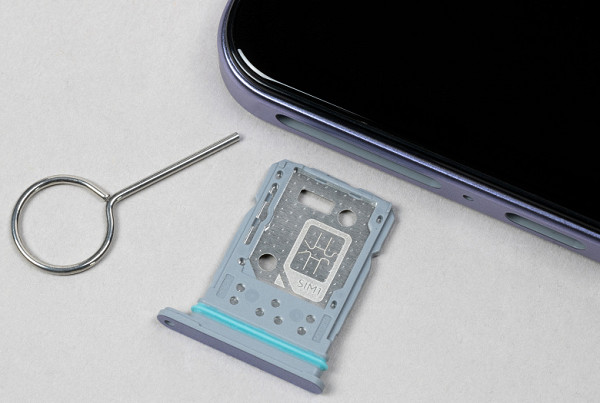
You can install two Nano-SIM cards in the slot on the bottom (on one side of the slide and on the other) or replace one of them with a microSD memory card.

Also at the bottom end there is a speaker, microphone and USB Type-C connector. There is no output to the 3.5 mm audio jack of a wired headset.

There is nothing on the top end except the auxiliary microphone hole.
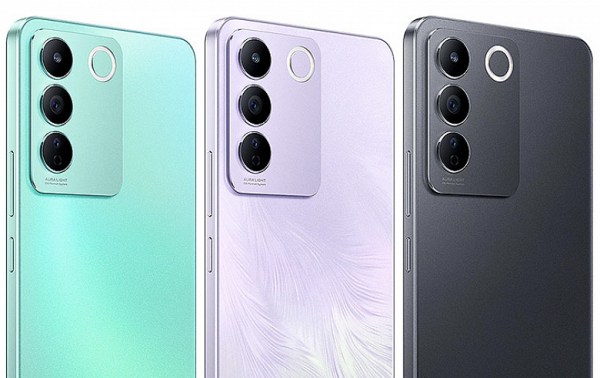
The Vivo T2 smartphone is available in black, purple (lavender) and turquoise colors. The case is not protected from moisture and dust.
Screen
The Vivo T2 smartphone features a 6.62-inch AMOLED display with a resolution of 1080×2400. The screen is protected by curved glass. The aspect ratio is 20:9 and the pixel density is 398 ppi. This display supports 120Hz refresh rate.
The front surface of the Vivo T2 screen is made of a glass plate with a smooth mirror surface that is protected from scratches. The anti-glare properties of this screen are superior to those of the Nexus 7. Its outer surface has an oleophobic (grease-repellent) coating, which makes fingerprints easier to clean. The maximum screen brightness under normal conditions is about 460 cd/m² and can increase to 730 cd/m² in bright light. This ensures excellent readability during the day in the sun. The minimum brightness value is 2 cd/m², which allows you to use the device even in complete darkness. The automatic brightness control function works adequately and allows you to adjust the brightness depending on the lighting conditions. At medium and high brightness levels, modulation with a frequency of 60 or 120 Hz is observed.
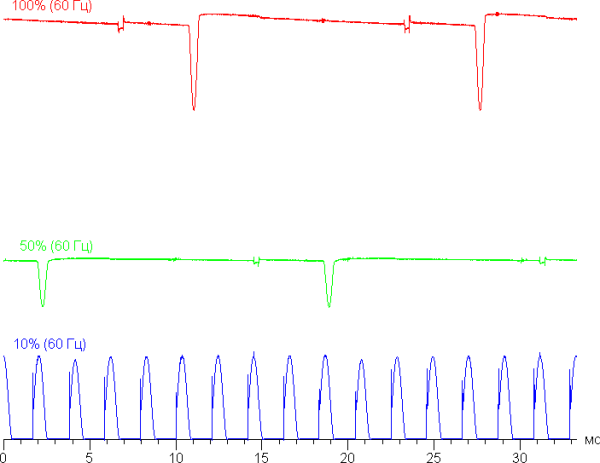
At medium and high screen brightness, low duty cycle is observed, which eliminates visible flicker. However, with a significant decrease in brightness, modulation appears with high amplitude and duty cycle, which can cause fatigue, especially in people with increased sensitivity. However, due to the high frequency and difference in modulation phase across the entire screen area, the negative impact of this flicker is reduced. A mode with a refresh rate of up to 120 Hz is available in the screen settings.

In 120Hz mode, the smoothness of scrolling menus and lists is significantly improved. It's important to note that the increase to 120Hz only applies to dynamic content, while for static images the refresh rate drops to 60Hz. Now let's see if the nature of the modulation changes with this configuration.
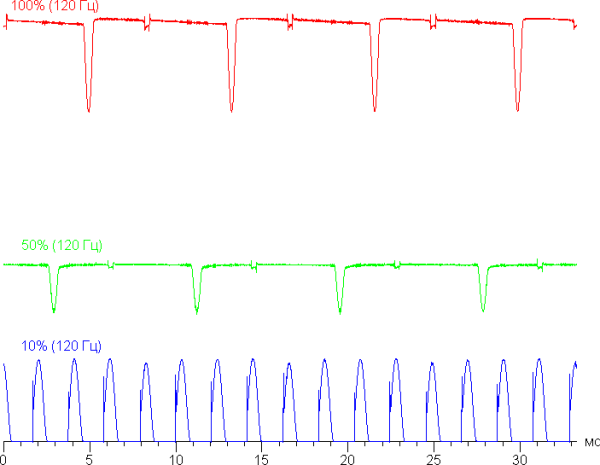
At high and medium brightness, the modulation frequency increases to 120 Hz, while at low brightness it remains the same as the 60 Hz refresh rate, making flicker noticeable.
The screen of Vivo T2 uses an AMOLED matrix — active matrix organic light-emitting diodes. A full-color image is formed by subpixels of three colors: red ®, green (G) and blue (B), but the number of red and blue subpixels is half as large, which is designated as RGBG. This is confirmed by a microphotograph of a fragment of the screen.
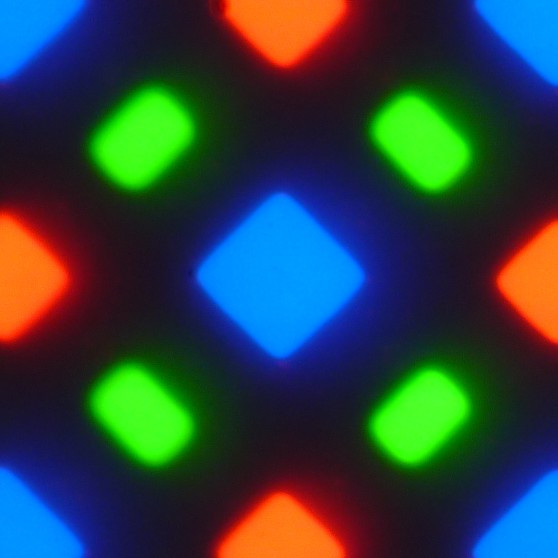
The fragment above shows 4 green subpixels, 2 red (4 halves) and 2 blue (1 whole and 4 quarters). By repeating these fragments, you can cover the entire screen without breaks or overlaps. Such matrices are called PenTile RGBG, introduced by Samsung. Screen resolution is determined by the green subpixels, while it is lower in the other two colors. Some artifacts and irregularities in contrast boundaries may occur, but due to the high resolution they have minimal impact on image quality.
The screen has excellent viewing angles. Although white color can take on iridescent shades with a slight deviation, black color remains saturated without changes. Contrast is not applicable in this case due to the extremely deep blacks. For comparison, photos are shown with the same images on the screens of a smartphone (top) and another device (Nexus 7 — bottom). The brightness of the screens is initially set to approximately 200 cd/m², and the color balance on the camera is switched to 6500 K.
Perpendicular to the screens, a white field is visible.
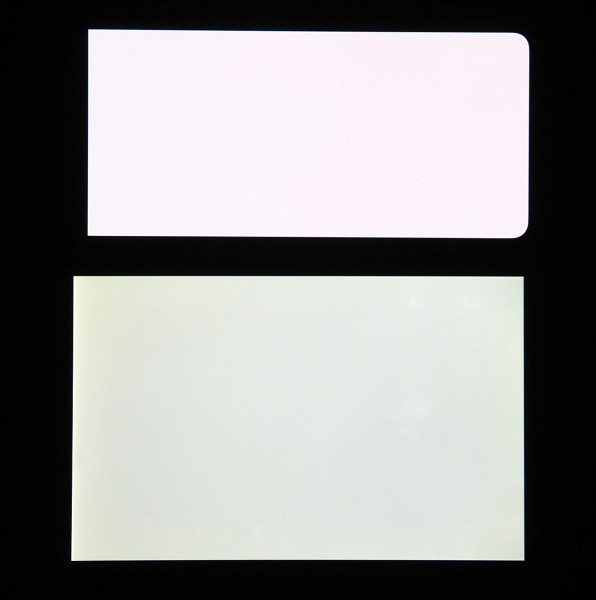
Note the good uniformity of brightness and color tone of the white field.
And a test picture (Pro Mode profile):
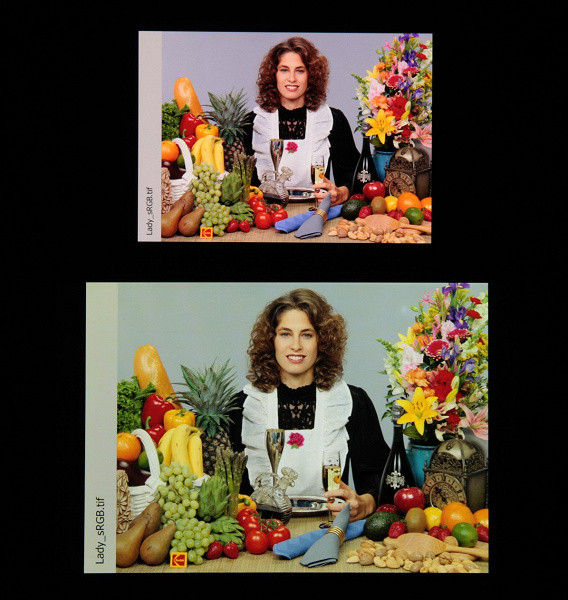
Based on our visual assessment, the colors on the tested screen look more or less natural, although there is a slight difference in color balance between screens. It should be noted that the photograph is not a reliable source of information about the quality of color reproduction and is presented for illustrative purposes only. For example, in photographs of the tested screen there is a pronounced reddish tint in white and gray areas, but this phenomenon is visually absent when directly viewing the screen at the right angle, which is confirmed by hardware tests carried out by a spectrophotometer. The reason for this is that the spectral sensitivity of the camera sensor does not exactly match the sensitivity of human vision.
The photo above was taken after selecting the Pro Mode profile in the screen settings, there are only three options available.

When you select the first one, Standard, which is set by default, the colors are oversaturated and unnatural:

When you select the first one, Standard, which is set by default, the colors are oversaturated and unnatural:

This device also has the function of correcting color balance using hue adjustment.
The decrease in brightness at an angle is noticeable on both screens, but on the smartphone the drop in brightness is much less. This results in the mobile device screen appearing visually brighter (compared to LCD screens) at the same formal brightness, especially when viewed from a shallow angle, which is often the case when using a smartphone.
Switching the state of the matrix elements occurs almost instantly, but at the moment of switching on (and less often, switching off), a step with a width of approximately 17 ms (at a screen refresh rate of 60 Hz) or approximately 8 ms (120 Hz) may appear.
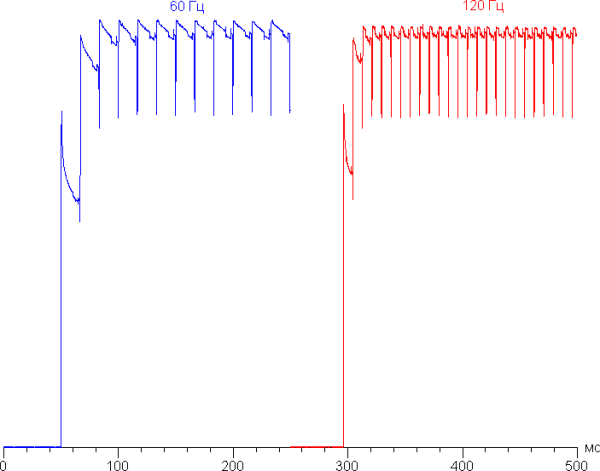
Under certain conditions, the presence of such a step can lead to the appearance of plumes that trail behind moving objects.
The gamma curve constructed from 32 points with equal intervals of numerical gray values showed no deviations in either shadows or highlights. The exponent of the approximating power function was 2.28, which is slightly higher than the standard value of 2.2. In this case, the real gamma curve deviates little from the power-law dependence.
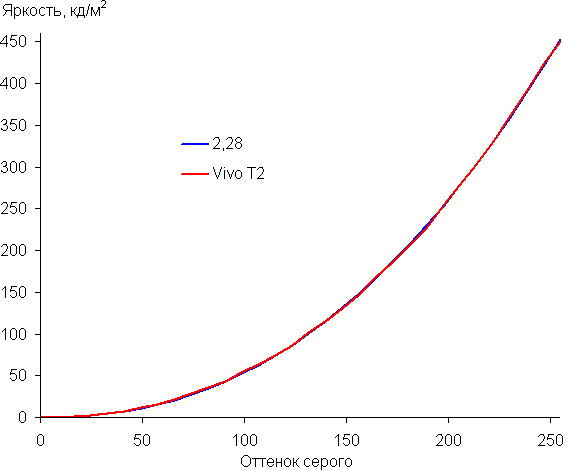
Let's remember that for OLED screens, the brightness of image fragments dynamically changes depending on the nature of the displayed content — it decreases slightly for overall bright images. This may result in slight differences in the hue (brightness) gamma curve from the gamma curve of a static image, since the measurements were taken with sequential grayscale output across almost the entire screen.
The color gamut in Vivid mode is very wide and exceeds the DCI-P3 standard.
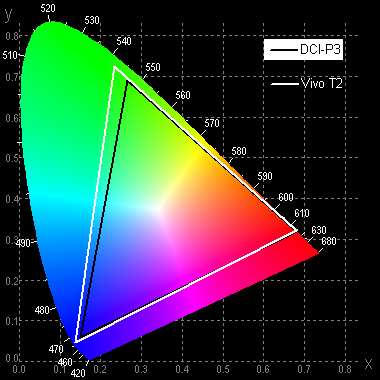
When you select the Pro Mode profile, the coverage is compressed to the sRGB boundaries:
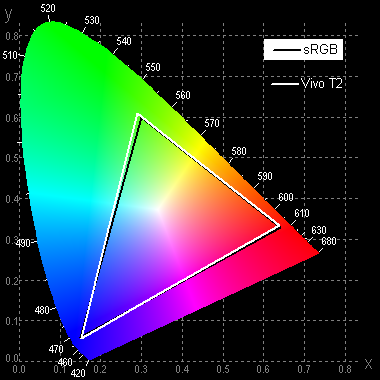
Coverage in the case of the Standard profile is close to the DCI-P3 space:
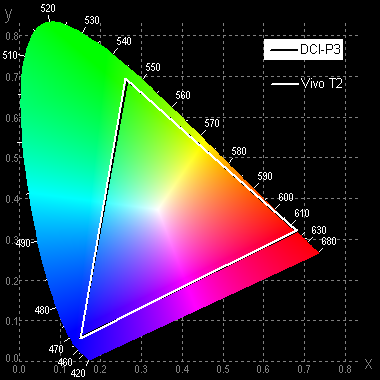
Without correction (the Bright option), the component spectra (that is, the spectra of pure red, green and blue) are very well separated:
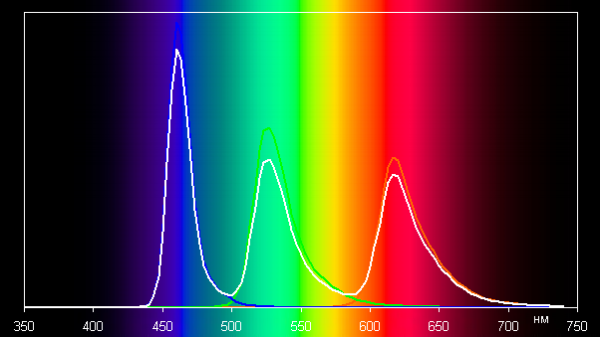
In the case of the Pro Mode profile, the color components are mixed with each other to a large extent:
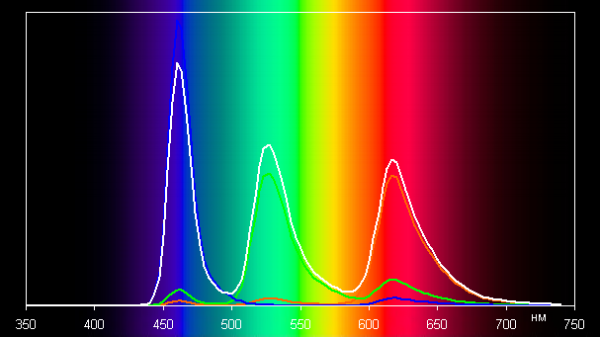
It's important to note that on wide-gamut screens, images designed for sRGB devices may appear overly saturated without appropriate color correction. Therefore, it is recommended to use the Pro Mode profile for viewing most content, including movies and photos, as it provides more natural color reproduction. The Standard profile can be useful when viewing DCI-P3 color gamut material typical of digital cinema, but in everyday life such cases are rare.
Even without additional color balance correction, the Pro Mode profile provides good results. The color temperature is close to the standard 6500 K, and the deviation from the blackbody spectrum (ΔE) is less than 10 units, which is acceptable for consumer devices. In addition, color temperature and ΔE vary little hue to hue, which has a beneficial effect on the visual perception of color balance.
The darkest regions of the gray scale do not have much impact on color balance in most cases, given the significant uncertainty in low-brightness color measurements.
There is also an «Eye Protection» setting that reduces the intensity of the blue component. Bright light can disrupt the circadian rhythm, but this can be resolved by reducing the brightness to a comfortable level, without distorting the color balance by reducing the contribution of blue.
According to a report from the USBTreeView program, this device probably does not support DisplayPort Alt Mode for USB Type-C — outputting image and sound to an external device when connected to a USB port.
So, the screen has a very high maximum brightness (up to 730 cd/m²) and excellent anti-glare properties, which allows its use even in bright sunlight. In complete darkness, the brightness can be reduced to a comfortable level (up to 2 cd/m²). The automatic brightness adjustment mode works adequately. The advantages of the screen also include an effective oleophobic coating, a 120 Hz refresh rate mode, good color balance and sRGB coverage after selecting the appropriate profile.
Let us also recall the general advantages of OLED screens: true black color, good uniformity of the white field and less drop in image brightness when viewed at an angle. Disadvantages may include screen flicker, which is noticeable at low brightness levels, but the overall screen quality remains very high.
Camera
The Vivo T2 smartphone is equipped with three rear cameras, but only one of them is a full-fledged module for main photography. The other two are auxiliary modules for macro photography and creating a blurred background effect.
- Main camera: 64 MP, f/1.8, with phase detection autofocus (PDAF) and optical image stabilization (OIS).
- Macro camera: 2 MP, f/2.4.
- Camera for measuring scene depth: 2 MP, f/2.4.
The main camera is equipped with fast phase detection autofocus and optical image stabilization. By default, photos are taken in 16 megapixel resolution with a pixel binning function. It is possible to switch to shooting in full 64 megapixel resolution, but strange features of the images are observed. In some cases, they may be blurry and even slightly pixelated, which may indicate a simple upscale of a 16-megapixel image. In other cases, the resolution is clearly higher, but characteristic artifacts are visible throughout the frame. In general, using full resolution is not always justified.
In general, the shooting quality can be described as average, falling between the average and budget levels. The processed photos have some edge sharpening, but this does not always significantly improve detail, especially noticeable in the crowns of winter trees. However, the dynamic range of photographs, especially in winter, is sufficient, all light areas are reproduced without overexposure, and the white balance remains adequate in the presence of snow in the frame. There is a slight «coloriness» but the user can manually adjust the color rendering to achieve a more natural display.
The following are additional examples of photos taken with the main camera:
When the lighting level is reduced, everything said above is only emphasized.
The smartphone does not have optical zoom, but 2x digital zoom works surprisingly well. Then the quality, of course, deteriorates greatly.
The smartphone supports video recording with a maximum resolution of 1080p and frame rates up to 60 frames per second. Level of detail, normal image sharpness, no noticeable twitching. There is also digital stabilization using the built-in gyroscope (gyro-EIS). Although the desired resolution may be higher, the overall video quality remains at a very respectable level.
Telephone and communications
The Vivo T2 smartphone supports various 4G mobile network bands, but does not have 5G support. In the urban area of Moscow and nearby areas, the device demonstrates stable operation in wireless networks, providing reliable connections and quick restoration of communications after interruptions. It also has support for Wi-Fi 5 and Bluetooth 5.2, as well as an NFC module.
The device is equipped with a single-channel navigation module that works with GPS, Glonass, BDS, Galileo and QZSS. Satellites are quickly detected during a cold start, and positioning accuracy leaves a good impression.
The sound quality during a call is clear, the voice of the interlocutor is loud enough. Vibration of the built-in speaker of medium power. The device also comes with all the necessary built-in sensors, including a gyroscope.
Software and multimedia
The Vivo T2 smartphone runs on the Android 13 operating system with a custom Funtouch 13 shell. A large number of pre-installed applications and games are built-in. The top notification panel is divided into two parts depending on the direction of the swipe. The user has access to the Google Play application store and Google services.
The device is not equipped with stereo speakers. However, the sound of the mono speaker is quite high quality and loud. Wired headphones do not have a 3.5mm jack, but wireless headphones with LDAC, aptX, aptX HD and aptX HD adaptive standards are supported.
Performance
The Vivo T2 smartphone is powered by an octa-core MediaTek Helio G99 processor (2×Cortex-A76 @2.2GHz + 6×Cortex-A55 @2.0GHz) and a Mali-G57 MC2 GPU. The RAM capacity is 8 GB and the internal memory is 256 GB. There is also support for a memory card and the ability to connect external devices via the USB Type-C port in USB OTG mode.
Although the platform is considered outdated and shows a result of less than 400K in the AnTuTu test, its performance is quite enough to perform various tasks and the interface works smoothly. It is even possible to run games at low graphics settings.
Testing in comprehensive tests AnTuTu and GeekBench:
All results obtained during testing of the smartphone were collected and presented in a convenient form in tables. In addition to smartphone data, the tables also include results from other devices from various market segments that were tested on similar versions of benchmarks. This helps to visually compare the figures obtained. However, due to limitations within a single comparison, not all worthy and relevant models were included in the tables, since they were tested on previous versions of the test programs.
| Vivo T2 (Mediatek Helio G99) | Tecno Camon 20 Pro 5G (Mediatek Dimensity 8050) | Vivo V27 (Mediatek Dimensity 7200) | Poco X5 Pro 5G (Qualcomm Snapdragon 778G) | Infinix GT 10 Pro (Mediatek Dimensity 8050) | |
|---|---|---|---|---|---|
| AnTuTu (v9.x) (bigger is better) | 339301 | 686367 | 602528 | 536193 | 693101 |
| GeekBench 6 (bigger is better) | 715/1447 | 1141/3216 | 1198/2686 | 941/2640 | 1087/3192 |
Testing the graphics subsystem in 3DMark and GFXBenchmark gaming tests:
| Vivo T2 (Mediatek Helio G99) | Tecno Camon 20 Pro 5G (Mediatek Dimensity 8050) | Vivo V27 (Mediatek Dimensity 7200) | Poco X5 Pro 5G (Qualcomm Snapdragon 778G) | Infinix GT 10 Pro (Mediatek Dimensity 8050) | |
|---|---|---|---|---|---|
| 3DMark Wild Life Extreme Vulkan (bigger is better) | 344 | 1307 | 1165 | 687 | 1316 |
| 3DMark Wild Life Vulkan (bigger is better) | 1152 | 4538 | 4186 | 2450 | 4509 |
| GFXBenchmark Manhattan ES 3.1 (Onscreen, fps) | 22 | 79 | 59 | 49 | 78 |
| GFXBenchmark Manhattan ES 3.1 (1080p Offscreen, fps) | 25 | 91 | 68 | 56 | 90 |
| GFXBenchmark T-Rex (Onscreen, fps) | 56 | 120 | 110 | 109 | 120 |
| GFXBenchmark T-Rex (1080p Offscreen, fps) | 64 | 198 | 160 | 132 | 211 |
Testing in browser cross-platform tests:
| Vivo T2 (Mediatek Helio G99) | Tecno Camon 20 Pro 5G (Mediatek Dimensity 8050) | Vivo V27 (Mediatek Dimensity 7200) | Poco X5 Pro 5G (Qualcomm Snapdragon 778G) | Infinix GT 10 Pro (Mediatek Dimensity 8050) | |
|---|---|---|---|---|---|
| Google Octane 2 (bigger is better) | 15941 | 33129 | 29329 | 27070 | 30618 |
| JetStream (bigger is better) | 53 | 73 | 87 | 73 | 70 |
AndroBench memory speed test results:
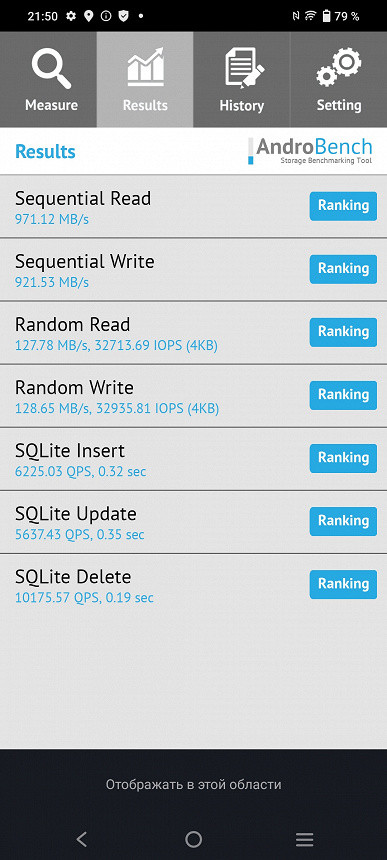
Heat
We test for performance degradation when heated using the Burnout Benchmark program, which allows you to load the CPU, GPU and NPU:
| Stress on | Heating performance as a percentage of maximum |
|---|---|
| CPU | 69% |
| GPU | 55% |
| NPU | 29% |
Battery life
The smartphone is equipped with a battery with a capacity of 4600 mAh, which is lower than the current standard. However, in tests it demonstrated impressive autonomy.
Testing was carried out at normal power consumption levels without activating power-saving functions, although the smartphone has such capabilities. The screen brightness was set to the minimum comfortable level (approximately 100 cd/m²). Tests included continuous reading in the Moon+ Reader app (using the standard, light theme), continuous HD video playback (720p) over a home Wi-Fi network, and Injustice 2 with automatic graphics settings.
| Battery capacity | Reading mode | Video mode | 3D Game Mode | |
|---|---|---|---|---|
| Vivo T2 | 4600 mAh | 25 h. 00 m. | 20 h. 00 m. | 8 h. 00 m. |
| Infinix GT 10 Pro | 5000 mAh | 20 h. 30 m. | 18 h. 00 m. | 8 h. 30 m. |
| Tecno Camon 20 Pro 5G | 5000 mAh | 19 h. 00 m. | 16 h. 00 m. | 7 h. 00 m. |
| Vivo V27 | 4600 mAh | 25 h. 00 m. | 19 h. 00 m. | 7 h. 00 m. |
| Poco X5 Pro 5G | 5000 mAh | 18 h. 00 m. | 20 h. 00 m. | 7 h. 00 m. |
| Realme 10 Pro+ 5G | 5000 mAh | 19 h. 00 m. | 18 h. 00 m. | 5 h. 00 m. |
| Xiaomi 12T | 5000 mAh | 19 h. 00 m. | 16 h. 00 m. | 6 h. 00 m. |
| Nothing Phone (1) | 4500 mAh | 15 h. 00 m. | 16 h. 00 m. | 5 h. 00 m. |
All this data is presented in ideal conditions without SIM cards installed, which includes the maximum possible figures. However, any changes in operating conditions are likely to affect the results, leading to their deterioration.
The smartphone comes with an 80W wall charger, but the Vivo T2 is limited in charging power to 66W and can be fully charged in less than an hour (around 50 minutes). Wireless charging is not supported.
Bottom line
Yes, the Vivo T2 smartphone is a typical example of the brand's products, where trying to find a balance between features and price often leads to compromises. It has an attractive design, ample memory and a high-quality AMOLED screen. However, with a MediaTek platform, screen flickering, a single speaker and inconsistent photo quality, the device does have its drawbacks. Overall, this is a typical Vivo model that may satisfy the needs of a certain segment of users, but is not without its shortcomings that should be taken into account when choosing.

